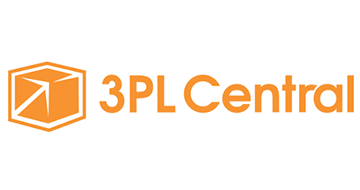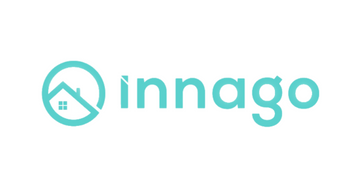
| Starting Price | Contact for price |
|---|---|
| Pricing model | Subscriber based |
| Free Trial | Yes |
| Free Version | No |
Our carefully compiled list includes the value best maintenance management software solutions that help organizations efficiently plan, track and optimize their maintenance activities. These software tools offer powerful features to increase maintenance productivity and reduce downtime.
Find the right tool for your needs.
Discover our comprehensive list of the best value maintenance management software solutions. Our top list represents the pinnacle of value and performance in maintenance management.

| Starting Price | Contact for price |
|---|---|
| Pricing model | Subscriber based |
| Free Trial | Yes |
| Free Version | No |

| Starting Price | Free |
|---|---|
| Pricing model | Transaction Fees |
| Free Version | Yes |
Maintenance management software is an industry-specific software that helps you track, manage, and record your maintenance activities. It is designed to help companies manage their maintenance activities better.
Maintenance management system is helpful for companies that have large fleets of vehicles. If you own a fleet of trucks or cars, you need to maintain them regularly, or they may break down while they are on the road. This can be very dangerous as well as expensive for your company. To avoid such problems, you should use this type of software in your business.
In addition, large companies often use maintenance management systems with hundreds of vehicles in their fleet. However, even small business owners can benefit from using these systems because they will help them manage their maintenance records more efficiently.
At its most basic level, a maintenance management system helps you track and organize your company’s assets. It will also help you keep on top of service requests, work orders, and preventative maintenance schedules.
A good system will make it easy for your team to stay organized and on top of all the tasks they’re responsible for.
In addition, this software is a popular choice for companies in asset-intensive industries such as energy, manufacturing, transportation, and many more. Within these companies, it’s usually used by the following groups:
In addition, one common theme among these groups is that each tracks their activities using work orders, tickets, or service requests assigned to specific employees or teams within a company. These individuals then use this information to manage their daily tasks (such as completing preventative maintenance checks).
We assign a unique score, The Genius Score, to each software solution based on external evaluations and our expert assessment. With the goal of providing reliable and trustworthy recommendations, our ranking methodology ensures that organizations can make informed decisions when selecting the ideal maintenance management software for their needs.
Maintenance management software provides specific functionality for different types of organizations. For example, it can be used by manufacturing companies to manage their production processes, by hospitals to manage their healthcare facilities, or by airlines to manage their fleet of aircraft.
Here are the main features of Maintenance Management Software (MMS):
Maintenance scheduling and tracking is the most important feature of MMS. It helps you schedule, plan, track, and report your maintenance activities. You can manage your maintenance schedule with this feature.
This feature enables you to create work orders for any maintenance activity. You can assign work orders to technicians, requesters, and other teams in your organization.
This feature allows you to track the performance of each work order based on its actual duration or cost. You can also compare actual performance against planned performance using this feature.
This feature allows you to manage service requests from customers or users in your organization. It will enable you to create service requests from other applications like CRM or ERP systems through web services. You can also assign service requests to technicians based on their skill sets and location availability for faster response time for customers’ requests.
The right maintenance management software can make all the difference in the success of your facility. A single platform that helps you manage and coordinate all your maintenance operations will help you improve efficiency, control costs, and streamline workflows. However, which one is right for you?
Here’s a guide to some benefits on the market:
You can use maintenance management software to automate routine equipment maintenance and inspection reminders. This ensures that important tasks don’t get overlooked, reduces the chances of a catastrophic accident and reduces the risk of injuries caused by faulty machinery.
Maintenance management software helps you organize your budget to know where your money is being spent on equipment and facilities upkeep. Additionally, when maintenance work is done correctly, it reduces the chance of expensive repairs or replacements becoming necessary.
With maintenance management software, employees can easily access all the information they need about a specific piece of equipment or facility. All the information about what’s been done and what needs to be done is readily available, allowing them to spend more time working and less time looking things up or asking questions.
Moreover, this boosts employee productivity and enables them to stay focused on their work rather than their record-keeping duties.
Maintenance Management Software is an essential tool for small and medium-sized businesses. It can help you track your assets, manage maintenance schedules, and ensure that your company is compliant with all relevant industry regulations.
But what companies should buy Maintenance Management Software? Here’s a quick overview of some of the most common customer segments:
Many small businesses have a lot to keep track of, and they often don’t have the time or resources to dedicate to maintenance management. That’s where Maintenance Management Software comes in handy. With software like ServiceMax and Autotask, small businesses can get everything from service scheduling to inventory management in one place.
Typically, medium-sized companies have more complex needs than smaller ones. They may manage multiple locations or hundreds of employees, which means that their maintenance management efforts need to be more advanced. Maintenance Management Software provides them with tools for managing assets across multiple locations, helping them reduce costs by streamlining their operations.
The cost of maintenance management software will vary depending on the vendor and the number of users that need to be licensed. Moreover, some vendors offer per user, per month pricing.
In addition, other vendors use a volume-based pricing model. This is where you pay for the number of assets being tracked. In the latter case, you should consider the total number of assets you need to track and include those in your cost calculations.
Moreover, some vendors may also charge an implementation fee, which covers the costs of installing and configuring your software. This can include training, consulting, data migration, and other services.